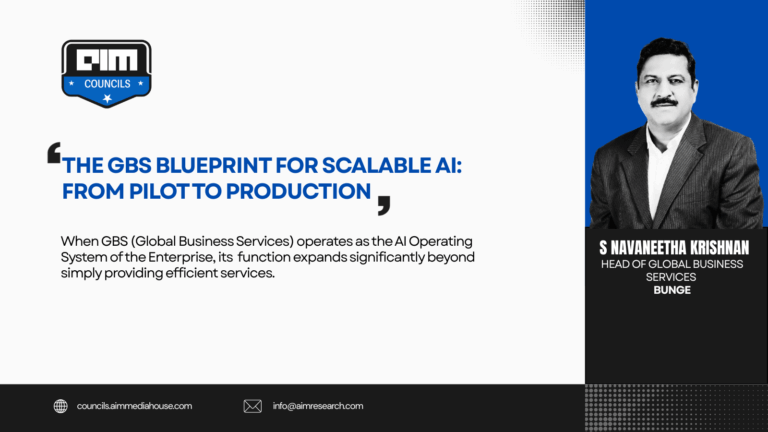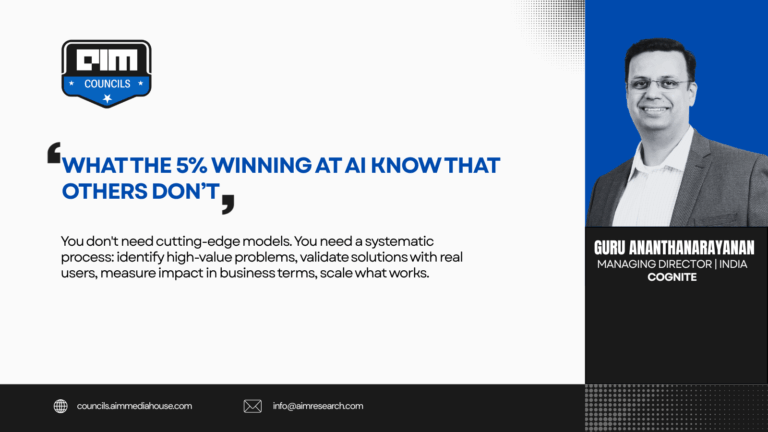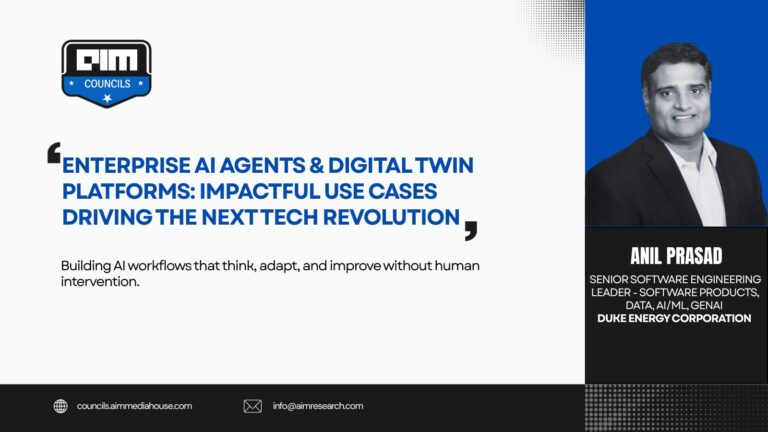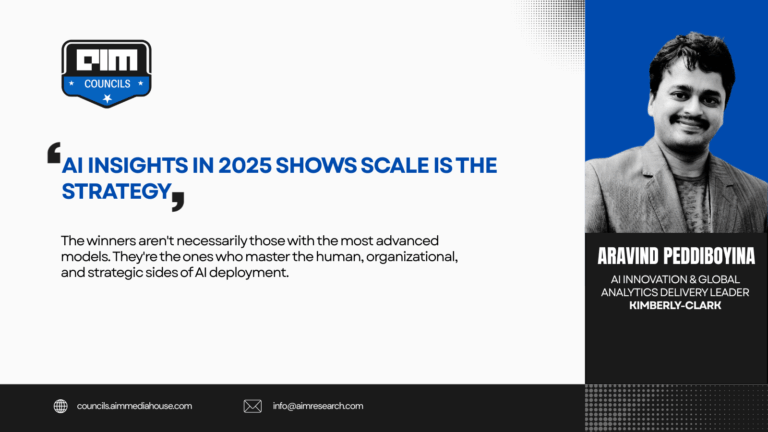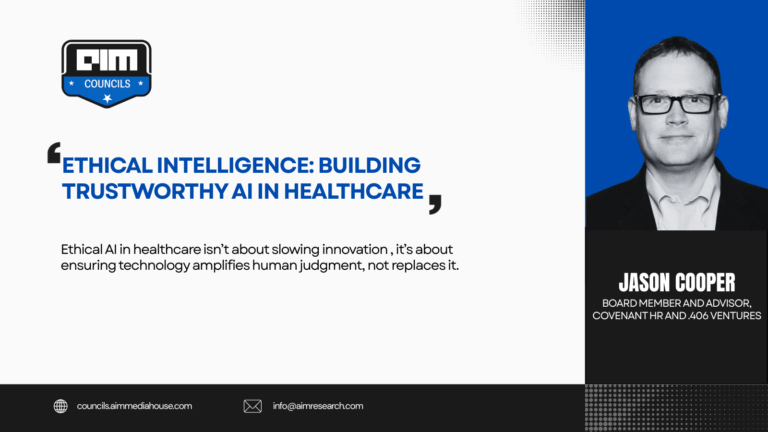Global Business Services (GBS) has evolved from Transactional Processing Centres to value creating enterprise with accelerated automation and adoption of powerful AI tools.
Many organizations successfully create Artificial Intelligence (AI) proofs of concept (POCs) but struggle to translate these into enterprise-wide productivity often referred to as the “AI pilot trap . Very few enterprises manage to scale AI projects beyond the pilot phase.
To shift from exploration, experiments to impact, organisations need a structured approach.
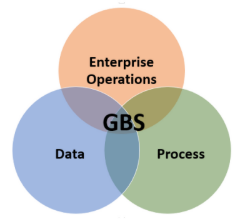
GBS organisations are at the right vantage point to make that scale happen. It sits at the intersection of processes, data, and enterprise operations.
It has accountability for productivity, quality, and compliance outcomes.
It has the capability to standardize and industrialize change.
AI does not create value by existing. It creates value when it scales
Here is the blueprint that has proven essential in our journey.
Start with Enterprise Value, Not Cool Technology
AI initiatives should fully align with enterprise priorities and scaling will become a leadership mandate if fully aligned with the overall enterprise value creation.

The basic question must always be what business value we are creating with AI. The value creation should be from any one of the following,
a) Enhanced productivity across processes
Embedding automation and AI into everyday operations improves throughput, creating measurable efficiency gains.
b) Reduced financial and compliance risks
By strengthening controls, improving data accuracy, and enabling real-time monitoring, automation reduces error-prone activities and supports a more resilient risk posture.
c) Stronger decision support for the business
With timely insights and predictive intelligence, leaders can make more informed decisions that drive performance and unlock new strategic opportunities.
Process Standardisation & Data Foundation First
AI cannot be scaled without usable, governed and trusted data.
a) Process Standardisation:
Even though LLMs can read unstructured data, they can’t create order out of organisational chaos by themselves. LLMs bring intelligence. Process standardisation brings structure. Together they make intelligence repeatable, explainable, and scalable. If every team runs a process differently, the AI cannot generalise or scale.
b) Data Quality:
Data Quality forms the bedrock of any successful AI initiative. Poor data introduces bias, leads to inaccurate outcomes, and ultimately erodes user confidence, preventing AI from delivering its promised value and scaling effectively across an enterprise.
c) Data lineage:
Understanding where data originates, how it moves, transforms, and is consumed across systems and reports Metadata: the “data about data” definitions, ownership, source systems, update frequency, data quality metrics, and business context is critical to build AI models. Without lineage, it’s impossible to validate what data an AI model is consuming or why it reached a decision.
Industrialize the AI Delivery Model
Scaling requires discipline and replicating the structured approach from opportunity assessment to implementation
Create a use case factory with:
a) Prioritized use cases based on business value
Ideas may emerge bottom-up from teams or top-down from leadership and Industry use case adoptions. Every opportunity must be evaluated using consistent criteria including value creation potential, ease of execution, and data readiness.
b) Use Standard architectures.
Tools and reusable components. After a successful proof of concept, establish a standardized architecture and tools aligned to the organization’s operating model, change readiness, and risk profile. This accelerates scale and ensures consistency.
c) Build a Strong AI Center of Excellence
A dedicated AI CoE is essential to scale delivery, ensure sustained execution capability, and accelerate value realization and ROI. AI adoption at scale for complex use cases requires a solid team of Tech and Deep Functional Experts and as a joint objective.
d) Redefine Processes in line with AI enable process.
Many of the steps required in a standard manual process may not be required if performed by an AI agent. When teams follow s structured approach – speed and success rates grow exponentially.
Governance without Bureaucracy
AI requires responsible scaling and end to end of process control and visibility. Governance should protect the enterprise while enabling speed.
AI and automations need guardrails. A robust Control Assurance model should be embedded in every initiative to monitor and mitigate risks of AI adoption.
a) Control analytics
It ensures that the system stays compliant, ethical, and accurate. This layer acts as the “AI watchdog” it doesn’t just monitor business processes, but also tracks AI performance, bias, and drift. Embedding controls builds organizational trust -users and auditors know there’s always a human visible safety layer over AI outcomes. When control analytics are centralised, AI agents across different functions can share learnings e.g., a risk pattern in Procurement may inform controls in Finance. This builds the backbone for AI adoption across multiple functions, not just isolated teams.
b) Explainability
It is essential to ensure that the underlying logic driving every outcome produced by models and automated systems is clear and transparent, enabling users to fully understand how decisions are made. Documented workflows and decision rules to reduce fear of “black box” AI. Role-appropriate transparency: Executives see value drivers, operators see process rules Easier troubleshooting and faster adoption occur when people trust what the system is doing
c) Risk visibility
Real-time alerts on anomalies, control breaks, and unusual patterns that signal financial, operational, or compliance risk. Central dashboards that show risk posture across functions, not silos. Strengthens accountability by making risks visible before they escalate.
d) Compliance tracking
Automated evidence collection for audits rather than manual hunting Continuous monitoring of policy adherence across locations and processes. Traceability of every action and decision to meet regulatory expectations The shift is from manual checks to real time and predictive control. That builds confidence for broader adoption.
Adoption is the Real KPI
A brilliant model that no one uses contributes zero value. Scaling succeeds when:
a) Users trust and embrace AI outputs
Trust grows when AI improves day-to-day work, not disrupts it. People must see fewer errors and faster outcomes. Transparent recommendations and traceable logic remove fear of AI being a “black box.” Engage users early through co-design and feedback loops. Adoption becomes a pull, not a push. When users rely on AI with confidence, productivity gains scale across the enterprise.
b) Skills evolve across the workforce
Continuous learning is required. Frontline teams must be trained to interpret AI outputs and act on insights. A skill strategy tied to career growth removes resistance and creates excitement for the future. Upskilled teams get more value out of every automation investment.
c) Transformation is championed by business leaders
Leadership sponsor signals that AI is not optional or experimental. It is a strategic priority. Business leaders must set the vision, connect AI to outcomes, and track adoption as seriously as compliance and finance indicators. When leaders model the behaviour and celebrate wins, AI becomes a shared mission, not a technology initiative.
Pilots prove potential. Scale delivers value. GBS leaders who take ownership of AI to scale will shape the competitive advantage of the enterprise.
The Future
When GBS (Global Business Services) operates as the AI Operating System of the Enterprise, its function expands significantly beyond simply providing efficient services. Instead, it takes on a more foundational and strategic role in orchestrating and enabling AI capabilities across the organization.
It becomes:
▪ The intelligence layer that powers performance
▪ The risk guardian that ensures resilient operations
▪ The capability hub that accelerates enterprise innovation


